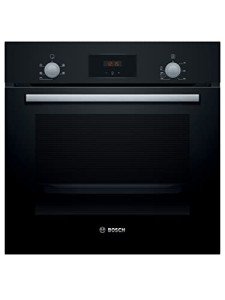Ten Built In Ovens That Really Help You Live Better
페이지 정보

본문
The Comprehensive Guide to Built-In Ovens
Introduction
Built-in ovens are a staple in modern-day kitchen areas, combining beauty with functionality. They provide a smooth aesthetic and effective cooking capabilities, making them a preferred choice for homeowners and culinary lovers alike. This article looks into the advantages of built-in ovens, their numerous types, key features to think about, installation tips, and upkeep guidance, together with frequently asked concerns.
Advantages of Built-In Ovens
Built-in ovens featured an array of advantages that contribute to their popularity. Here are some essential advantages:
- Space-Saving Design: Built-in ovens are developed to fit flawlessly into cabinets, enabling for a more orderly and space-efficient kitchen design.
- Visual Appeal: They offer a streamlined and contemporary look that can enhance the general style of the kitchen.
- Improved Functionality: built in ovens (git.fuwafuwa.moe)-in ovens frequently feature sophisticated features and technologies that support different cooking approaches.
- Boosted Cooking Experience: Many built-in designs consist of self-cleaning functions, temperature level probes, and programmable settings, improving the cooking experience.
- Increased Property Value: A properly designed kitchen with built-in appliances can enhance the value of a home.
Kinds Of Built-In Ovens
Built-in ovens been available in a number of types, each developed to meet numerous cooking choices and requirements. Here are the main types:
| Type of Built-In best integrated oven uk | Description |
|---|---|
| Single Oven | A single, standalone oven for conventional baking and roasting. |
| Double oven built in | Combines two ovens in one unit, enabling numerous meals to prepare at various temperature levels. |
| Wall Oven | Installed in the wall, maximizing counter area, perfect for little kitchen areas. |
| Convection Oven | Uses fans to flow hot air for even cooking, improving the results of baked goods. |
| Steam Oven | Makes use of steam for healthier cooking choices, maintaining nutrients in food. |
Secret Features to Consider
When choosing a built-in oven, several functions can impact efficiency and usability. Here are some important functions to bear in mind:
Cooking Modes
- Bake: Traditional baking with bottom heat.
- Broil: Top heat cooking appropriate for browning and crisping.
- Convection: Circulates hot air for even cooking.
- Steam: Uses steam for healthier cooking options.
Size and Capacity
- Requirement sizes generally range from 24 to 30 inches broad.
- Consider the internal capacity-- it can range from 3 to 6 cubic feet, enabling different dish sizes.
Controls and Smart Features
- Touchscreen Controls: Easy shows and adjustments.
- Smart Technology: Connectivity features enable for remote monitoring and control through mobile phone applications.
Energy Efficiency
- Search for models with ENERGY STAR rankings, indicating lower energy usage.
Safety Features
- Functions like automobile shut-off and child locks improve safety during operation.
Installation Tips
Installing a built-in intergrated oven and hob may need professional assistance, however here are some general pointers to keep in mind:
- Choose the Right Location: Ensure there's adequate area bulit in oven your cabinetry for installation, remembering ventilation requirements.
- Electrical Requirements: Check that your kitchen's wiring satisfies the oven's power requirements, specifically for electric integrated oven models.
- Level the Oven: built in ovens Ensure the oven is level to promote even cooking.
- Protect the Oven: Attach it securely to the cabinets to prevent motion during usage.
Upkeep Advice
Routine upkeep is essential for the durability and efficiency of a built-in oven. Here's how to keep it in leading shape:

- Regular Cleaning: Wipe down surfaces after each use and carry out deep cleaning occasionally.
- Check Seals: Inspect door seals for wear and ensure they keep an airtight fit to improve energy efficiency.
- Adjust Temperature: If food regularly comes out overcooked or undercooked, think about recalibrating the oven's temperature settings.
- Professional Servicing: Schedule annual check-ups with a qualified service technician to preserve ideal performance.
FAQs
What is the distinction in between a built-in oven and a freestanding oven?
Built-in ovens are developed to be set up within kitchen cabinetry, providing a seamless look. On the other hand, freestanding ovens are standalone units that typically feature their own cooktop.
Are built-in ovens more expensive than freestanding designs?
Usually, built-in ovens can be more expensive due to the included setup costs and advanced features. However, rates differ commonly based on brand, size, and performances.
Can I set up a built-in oven myself?
While it is possible to install a built-in oven yourself, it is advised to hire a professional to make sure correct setup, particularly if adjustments to cabinets or electrical work are needed.

How often should I clean my built-in oven?
It is suggested to clean your built-in oven frequently after heavy usage. For much deeper cleansings, utilize the self-cleaning function if offered or regularly carry out manual cleaning to prevent accumulation.
Built-in ovens are an important addition to any kitchen, offering both visual appeal and advanced cooking capabilities. By comprehending their types, functions, installation, and upkeep requirements, homeowners can make educated options that enhance their cooking experience and boost the overall value of their homes. As kitchen designs continue to evolve, built-in ovens will likely remain a prominent choice for modern homes.
- 이전글A Comprehensive Guide To Innovative Electric Treadmills. Ultimate Guide To Innovative Electric Treadmills 25.05.18
- 다음글The 10 Most Terrifying Things About Built In Range Oven 25.05.18
댓글목록
등록된 댓글이 없습니다.